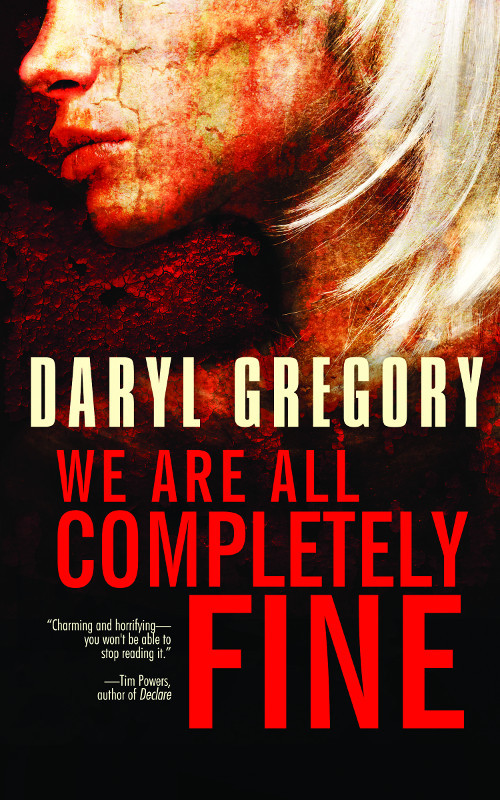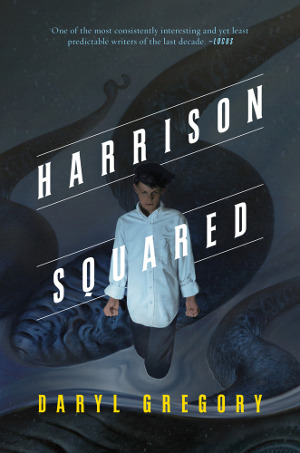In WE ARE ALL COMPLETELY FINE, the hero is the group itself

At BOOKS, BONES & BUFFY, Tammy Sparks interviews Daryl Gregory about the Nebula nominated WE ARE ALL COMPLETELY FINE and its recently released prequel HARRISON SQUARED.
BB&B: Harrison Squared is a prequel to We Are All Completely Fine, describing Harrison’s teenage years and his misadventures in Dunnsmouth. Have you considered writing prequels for any of the any characters in We Are All Completely Fine?
DG: This is the first time prequels and sequels have been on the menu for me. Before these two books, none of my novels shared a universe. Hardly any of them even share a genre. I’ve written near-future hard SF, a literary zombie novel that talks more about how brains work than how they taste, a Southern Gothic murder mystery about Tennessee mutants… really, it’s no way to run a career. Thank goodness for the readers who are willing to follow me from book to book.
I never seriously considered sequels for those other novels, because when I finished I felt like I’d told the story I wanted to tell. The world of the story was bound up with the characters who lived there. When the characters’ stories were complete, that world closed down for me. (And often, the main characters were so changed by the end that they were unfit to tell the same kind of story again.)
But with these two books, the characters’ stories aren’t finished. I’ve got plenty more ideas. For example (here comes the plug) the free interactive story online,Harrison Squared Dies Early (http://darylgregory.com/harrison-squared/game), where you take on the role of Harrison on a monster hunt through Dunnsmouth Secondary. Think of those old choose-your-own-adventure books, but running in your browser. It has art by David Hinnergardt, and text and puzzles by me.
So what was your question? Oh, right! I haven’t mapped out prequels for the other characters in We Are All Completely Fine, but I have thought of sequels for them. Let’s see if I get around to writing them!
<snip>
I know we’re here to celebrate the release of Harrison Squared, but I have a burning question about We Are All Completely Fine. The point of view you used was a bit unusual. My guess is “first person omniscient,” but even then I feel like you gave that a twist. What made you decide to use this POV?
I’m happy to answer burning questions—and this one has heated up more than a few people. In We Are All Completely Fine, each chapter begins in first person plural: “We did this,” “We thought that.” Then the chapter focuses on the point of view of one member of the group.
So what’s this all about? In my mind, the protagonist of the book is not Harrison, or any one member of the group—the hero is the group itself. The story is about how a handful of individuals, including the therapist, become something larger and stronger than themselves. And as you may have picked up on, that “we” is not quite omniscient—it knows only what the group knows. One chapter even leads off with a question about that pronoun: who’s in this we, and who’s out? Is the group that started the book the same group at the end?
And near the end, the point of view starts shifting among multiple group members in one chapter, to show how the group is cohering, even though some members are no longer with the group. (It would be spoilers to tell your readers which ones, and how they leave.)
Read the rest of the interview at BOOKS, BONES & BUFFY.

BOOKS, BONES & BUFFY is also giving away three copies of HARRISON SQUARED. Visit the site for full details.
For information on WE ARE ALL COMPLETELY FINE, visit the Tachyon page.
Cover design by Elizabeth Story.
Cover for HARRISON SQUARED by Allen Williams.
